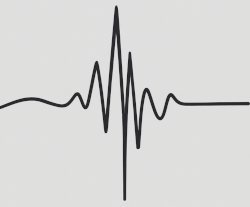749 CE Earthquake in the Sabbatical Year Sequence









In the mid-eighth century CE, Jerusalem was struck by a violent
earthquake that devastated parts of the city and damaged
the al-Aqsa Mosque on the
southern edge of the Haram al-Sharif.
Muslim historians writing over the following centuries preserved
accounts of this disaster and of a second earthquakes and
repairs that reshaped the early mosque.
According to the earliest surviving description, written around
985 CE by the Jerusalemite
al‑Maqdisi,
“earthquakes threw down most of the main building” of al-Aqsa,
leaving standing only the portion surrounding the
mihrab.
The reigning Abbasid caliph, upon hearing of the destruction,
is said to have found the treasury insufficient for a full
reconstruction. He therefore ordered the governors of the
provinces to each contribute by erecting a
colonnade. The rebuilt
structure, completed under these instructions, stood “firmer
though less elegant” than the original. Although al-Maqdisī’s account preserves valuable architectural
and administrative information, a synthesis of all surviving
sources shows that parts of his chronology and archaeoseismic
description are inaccurate or disputed. The earthquake appears to have taken
place under Umayyad, not Abbasid, rule, and later authors
restrict the damage to the eastern and western walls of the
al-Aqṣā Mosque rather than to the entire structure, while also
describing a different source of funding for the repairs.
A later historian,
al-Dhahabī,
recorded that this first earthquake occurred in
A.H.
130 (747–748 CE) and described it as the most violent ever
felt in Jerusalem, killing many residents—including members of
the prominent
Aws family
—and toppling the house of
Shaddād ibn Aws
. In his account, the
Caliph al-Manṣūr (r. 754–775 CE)
subsequently organized repairs using
gold and silver stripped from the mosque’s ornate doors to fund
the reconstruction.
Yet this repair was short-lived. Both
Jamal ad Din Aḥmad
and
Mujīr al-Dīn
explain that a second earthquake struck not long after the first,
bringing down the new structure built by al-Manṣūr. The third
Abbasid caliph,
al-Mahdī (r. 775–785 CE), then ordered a complete
rebuilding of al-Aqsa, instructing that it be made broader and
shorter than before to better serve worshippers.
Mujir al‑Din, writing in Jerusalem in 1495 CE, preserved three
different
isnād-based traditions about this earthquake.
His narrators describe a nighttime earthquake accompanied by wind,
rain, and terror: “the dome lifted itself up so that the stars
were visible in the sky, and then it settled again.” In one
version, witnesses heard unseen voices commanding, “Lift it up
gently, in the name of God,” and later, “Put it down, put it in
place.” Although written seven centuries later, such details
suggest that Mujīr al-Dīn’s accounts preserve traces of early
oral history, transmitted within the genre of
Jerusalem praise literature
(Williams, 2024).
Modern synthesis of these sources
(Williams, 2024)
suggests that the first earthquake corresponds to the
first of the Sabbatical Year Quakes
of January 749 CE (A.H. 131). This shock likely caused the
initial destruction of al-Aqsa and much of Jerusalem.
A later tremor—perhaps part of the same regional sequence or
a By No Means Mild earthquake series reported in 756 CE—may
explain the second collapse that led to al-Mahdī’s rebuilding.

